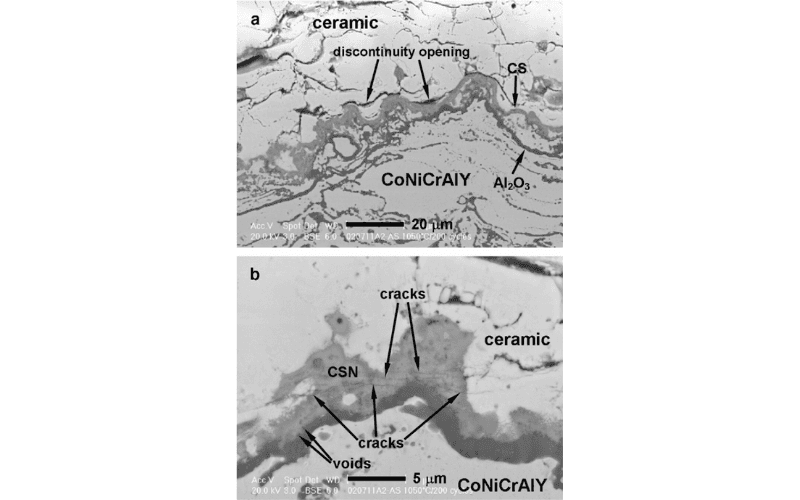May 15, 2008
Pre-Oxidation And TGO Growth Behaviour Of An Air-Plasma-Sprayed Thermal Barrier Coating
In thermal barrier coating (TBC) systems, spinel and nickel oxide formed in an oxidizing environment are believed to be detrimental to TBC durability during service at high temperatures. The present study shows that in an air-plasma-sprayed (APS) TBC with Co–32Ni–21Cr–8Al–0.5Y (wt.%) bond coat, pre-oxidation treatments in low-pressure oxygen environments can suppress the formation of the detrimental oxides by promoting the formation of an Al2O3 layer at the ceramic topcoat/bond coat interface. The development of the thermally grown oxide (TGO) layer generally exhibits a three-stage growth phenomenon that resembles high temperature creep. The pre-oxidation treatments reduce the growth rate and extend the steady-state growth stage, leading to an improved durability. Crack propagation in the TBC proceeds via opening and growth of pre-existing discontinuities in the ceramic topcoat, assisted by crack nucleation and growth associated with the TGO. Crack propagation during thermal cycling appeared to be controlled by TGO growth, and the maximum crack length and TGO thickness generally have a power law relationship.
Key words: TBC; CoNiCrAlY; Pre-oxidation; Thermal cycling; TGO growth; Crack propagation
Originally published at Surface and Coatings Technology (Volume 202, Issue 16, 15 May 2008, Pages 3787-3796)
By W.R. Chen, X. Wu, B.R. Marple, R.S. Lima, P.C. Patnaik
